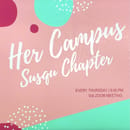Are you surprised to hear that there are several various subcategories of feminism? Since feminism covers the wide area of equality, several divisions of the feminist movement have emerged over time. This has resulted in the subcategories of feminist literature as well. If you’re searching for a specific book to learn about feminism, look no further than this article! Please keep in mind that these types of feminism are subjective and are up for debate and interpretation. Several of the books I mention can fit into other categories of feminism as well.
Intersectional Feminism – Too Much: How Victorian Constraints Still Bind Women Today by Rachel Cote
Intersectional feminism is one of the most widely discussed types of feminism. Most of the people I know who identify as a feminist say that specifically believe in intersectional feminism. Why is this? Personally, I think it’s because this type of feminism encompasses many sexualities, races, and orientations. What’s great about this is that there are so many wonderful books about intersectional feminism to choose from! However, Too Much: How Victorian Constraints Still Bind Women Today is one of my favorites because the author specifically compares her experiences as a feminist to other feminists. For example, the author immediately admits her privilege as a white woman and she tells her story, interrupting the plot at times to acknowledge everyday sexism and racism. Cote covers a wide range of feminist topics, all with intelligence and clarity.
Black Feminism – Hood Feminism by Mikki Kendall
I love this book in every way possible that you can love a book! As the name suggests, Black feminism is all about promoting the ideas and theories of what it means to be a Black woman. I love the way Kendall points out what white feminists are doing wrong, but she points out ways everyone can do better. As a white feminist myself, I found this book to be an inspirational resource. After reading this book, I was left with a warm, happy feeling and believing that I can do my part to make the world a better place. Also, the amount of research that went into this book – so impressive! The use of statistics, articles, quotes, and personal experiences balanced each other out so perfectly.
Anarchist/Radical Feminism – The Testaments by Margaret Atwood
Usually, I would try to separate these two types of feminism, but since they intersect so often, there is good reason to discuss them together. While anarchist feminists believe that all forms of female oppression should be destroyed, radical feminists believe in the complete abolishment of the patriarchy, sometimes to the extent of creating a matriarchy. What I love about Atwood’s writing is that she uses a novel to critically examine gender division in our society. In the sequel to The Handmaid’s Tale, Atwood takes a look at what happens when women fight back against the patriarchy and what it means to dispute power amongst men and women. Even though this book is fictional, it’s feminist themes are nonetheless important.
Lesbian Feminism – Zami by Audre Lorde
As suggested in the title, lesbian feminism emerged when members of the gay community felt excluded from the heterosexual feminist movement. Audre Lorde is one of the most well-known writers of lesbian feminism, and for good reason! Her raw prose and emotional language have made her become one of the world’s most recognizable feminists. I just read Zami for my memoirs class and what profoundly affected me was how Lorde described not feeling comfortable in either Black feminist or lesbian feminist spaces. Lorde’s search for identity is something we can all relate to.
Cultural Feminism – Bad Feminist by Roxane Gay
Cultural feminism seeks to focus on the separation of masculinity and femininity throughout history. While some of the theories of this type of feminism are outdated, understanding where cultural feminism comes from is essential to understanding how contemporary feminist theories were formed. Bad Feminist by Roxane Gay details Gay’s own personal experiences, and why Gay feels like an unworthy feminist. Gay struggles to embrace her femininity but is worried about the “correct” way to do this. If anything, this book is a critique of some of the theories posed by cultural feminists. However, Gay does write about what makes women special, and cultural feminism is all about focusing on positive female attributes.

Ecofeminism – The Sacred Hoop: Recovering the Feminine in American Indian Traditions by Paula Gunn Allen
Ecofeminism, while rarely talked about, is important because it’s given a voice to many Indigenous writers and poets. Ecofeminism is concerned with the intersection of women and environmental issues, specifically with how the environment has been given feminine nicknames such as “Mother Earth” and “Mother Nature.” Paula Gunn Allen’s writing was my introduction to this type of feminism. Allen’s writing is informative, illuminating, and academic-focused. With the current debate about climate change, it is more important than ever to acknowledge the importance of this type of feminism.

Of course, these are only a few of the many types of feminism. If you want to learn more, here is a great website to start with.






